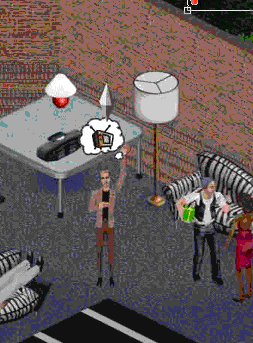I never took swimming lessons. My dad loved swimming and would try to take me out to the pool with the arm floaters and then he’d let go and I’d be yelling within a couple seconds.
Nobody wants to read your sh*t. The title can be backed up by opening up my site’s analytics. I enjoyed Steven Pressfield’s other books on writing: The War of Art, Do the Work, and Turning Pro.
They’re sometimes referred to as a trilogy. I’d say this is more like Prometheus than Alien: Resurrection. I think it’s more like, “Ok, you’re doing the work. You’re writing. Now it’s time to get better.”
I sat down at my laptop (again, right in the WordPress editor) to do the work. I knew I had a bunch of highlights from the book, so I could just grab one and write thoughts on it. Except those highlights and notes seem to be gone after upgrading my phone. (I was highlighting in the Kindle app, but it was a free non-Kindle version of the book. I’m guessing they disappeared when I got an iPhone 7.)
Sometimes I use book excerpts a little heavily and they can be like the arm floaters. Today I’ll write without excerpts from the book.
It’s been a few months since I read it, which is great to gauge what really stuck with me. I wrote it as a directive in my “Books I Read This Year” recap and it’s the lesson that stuck with me: always tell a story. That’s clear for novels and movie scripts. It applies in other fields, too.
The best ads tell a story in a few words. Even technical posts are more interesting when there’s a clear beginning (what’s the problem), middle (what’s can some technology do), and end (this is how the technology solved the problem).
In 5th grade, I went to the pool with some friends. I wasn’t allowed in the deep end because I hadn’t passed the swim test. Now I’m forgetting how they even knew who passed and who didn’t. I don’t remember them checking before you get in the pool. Maybe you get in trouble for running near the pool but you get in super trouble if you drown and haven’t passed the swim test.
Anyway, it was never great being one of the kids that couldn’t go to the deep end. There weren’t any pre-requisites for the swim test other than being ten years old. One day I got fed up and walked to the gym alone to take the test. First half: swim down the lane once, swim back once. No problem. Under control. To finish it off, I just had to wade for two minutes. I remember rising up as the lifeguard one-armed me to the surface.
Fall seven times, rise up eight, right? Right now I’m going sentence by sentence into the deep end. I’m seeing how far I can go and still keep my nose above the surface. Eventually I’ll be able to wade out there. Maybe I’ll write something worth two entire minutes of someone’s attention. Until then, I’ll write two crappy pages over and over until someone wants to read my shi*.













